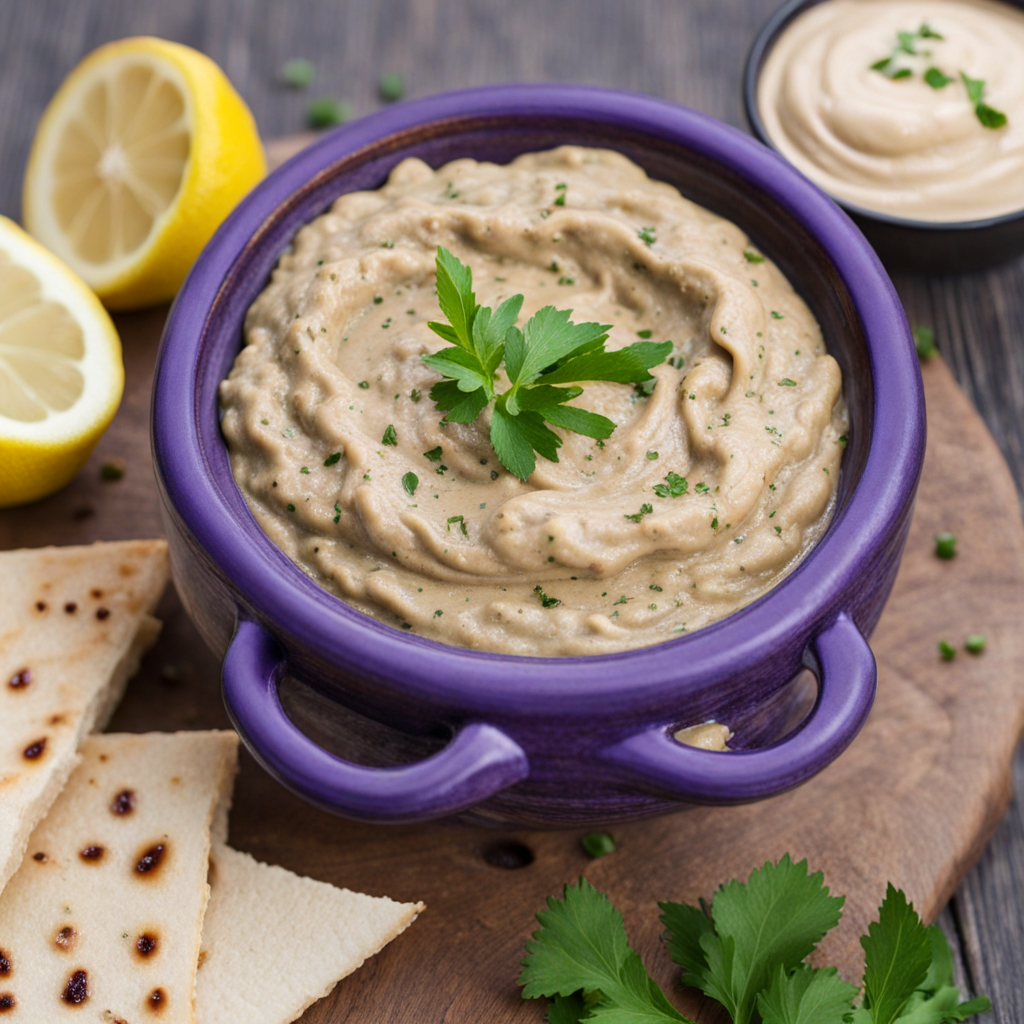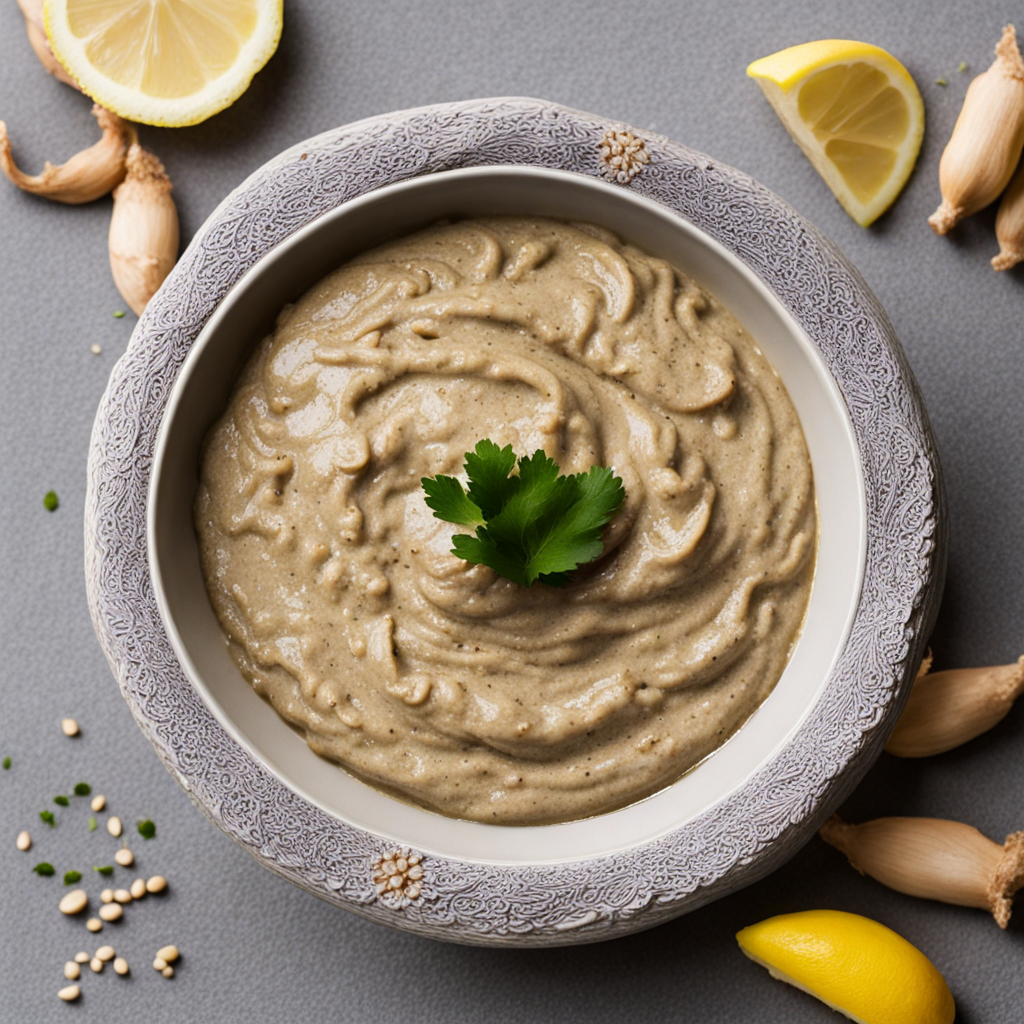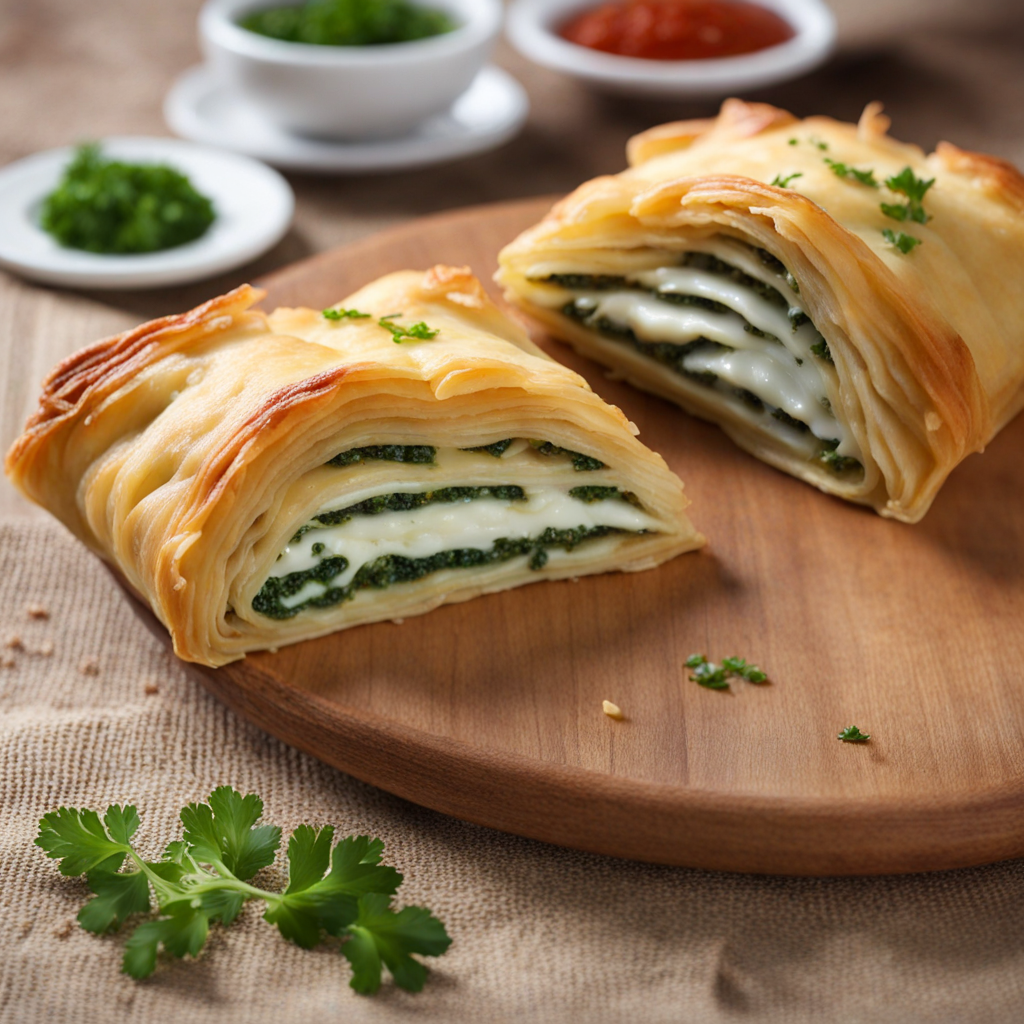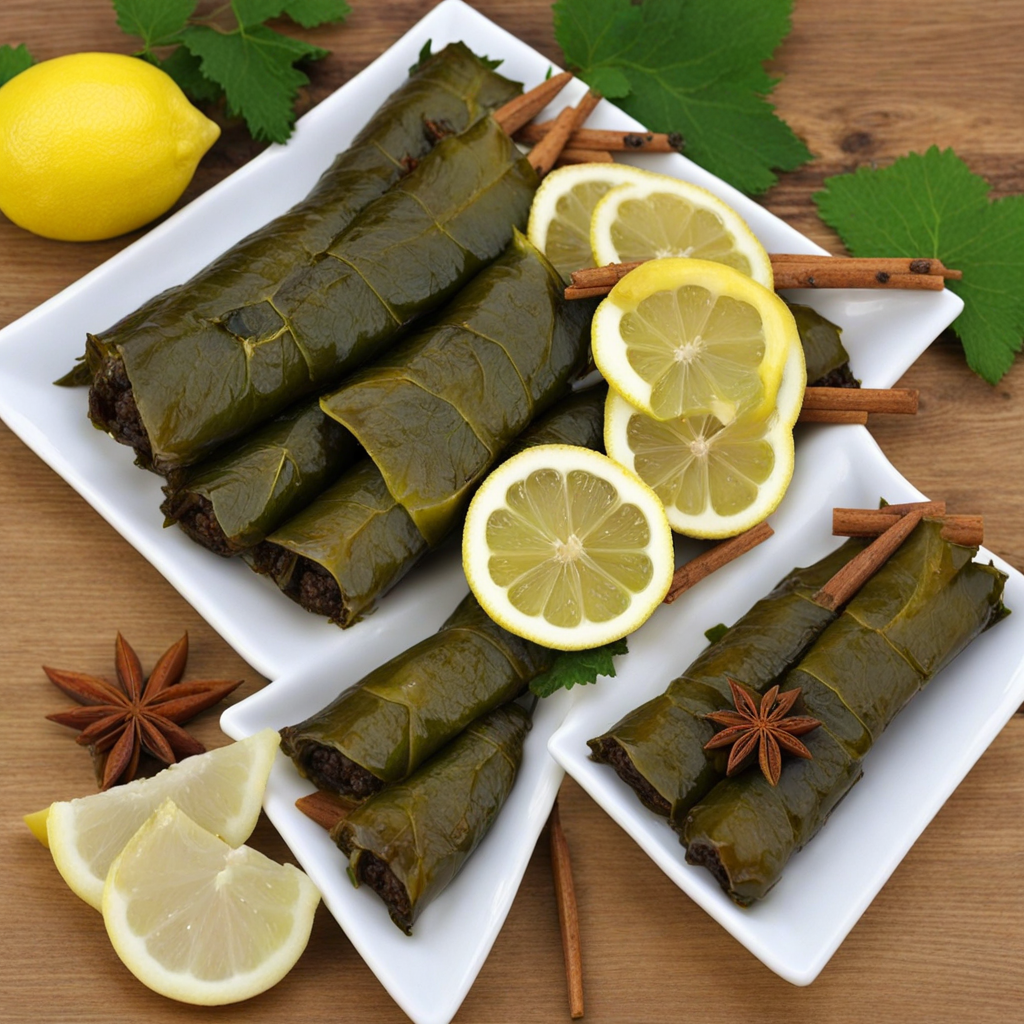Baba Ghanoush
Baba Ghanoush is a velvety, smoky dip that originates from the Levantine region, particularly popular in Syria. At its core, it features roasted eggplant, which is charred until the skin blackens, imparting a deep, smoky flavor that beautifully complements the creamy texture of the flesh. The eggplant is then mashed and blended with tahini, a creamy sesame paste, which adds nutty richness. Garlic, lemon juice, and olive oil are incorporated, creating a harmonious balance of flavors that is both refreshing and satisfying on the palate. This dish is often garnished with a drizzle of olive oil, a sprinkle of paprika or sumac, and sometimes fresh herbs like parsley or pomegranate seeds for an added burst of color and flavor. The combination of ingredients results in a dip that is not only luscious but also versatile, making it an ideal accompaniment to warm pita bread, fresh vegetables, or as part of a larger mezze platter. Each bite showcases the depth of the roasted eggplant paired with the bright acidity of lemon, creating a unique taste experience that is both familiar and exotic. Baba Ghanoush embodies the essence of Syrian cuisine, with its emphasis on fresh, high-quality ingredients and bold flavors. It is a dish that invites exploration, as each region may have its own twist on the classic recipe. Whether enjoyed as an appetizer or a flavorful spread, Baba Ghanoush offers a delightful journey into Middle Eastern culinary traditions, inviting you to savor the rich tapestry of flavors that define this beloved dip.
How It Became This Dish
The History of Baba Ghanoush: A Culinary Gem from Syria Baba ghanoush, a beloved dish of roasted eggplant and tahini, has become a staple not only in the Middle Eastern diet but also in global cuisine. This creamy, smoky dip has its roots steeped in the rich agricultural and cultural heritage of the Levant, particularly in Syria. The history of baba ghanoush is a fascinating tale of regional identity, agricultural abundance, and culinary innovation. #### Origins of Baba Ghanoush The origins of baba ghanoush are somewhat shrouded in mystery, with several theories surrounding its creation. The dish is believed to have emerged in the Levant region, which includes modern-day Syria, Lebanon, Jordan, and Palestine. The earliest references to baba ghanoush date back to the 13th century, where it was likely made with simple ingredients native to the region, such as eggplant, tahini (sesame paste), garlic, and olive oil. The word "baba" translates to "father" in Arabic, while "ghanoush" is often interpreted as "pampered" or "spoiled." Some suggest that the name reflects a playful interpretation, possibly referring to a father figure who enjoys a lavish lifestyle. Others argue that it signifies a dish that was considered a delicacy, fit for the most discerning palates. The dish's name and its opulent flavors speak to the cultural significance of food in Middle Eastern societies where hospitality is paramount. #### Cultural Significance Baba ghanoush is more than just a dish; it is a symbol of social connection and cultural pride. In Syria, food serves as a bridge between generations, carrying recipes and traditions from the past into the present. Baba ghanoush, prepared with local ingredients, embodies this connection. The process of making the dish often involves family gatherings, with members coming together to roast eggplants over an open flame, creating a communal experience that strengthens family bonds. In Syrian culture, baba ghanoush is often served as part of a meze platter—a selection of small dishes designed for sharing. This practice reflects the Middle Eastern ethos of hospitality, where meals are meant to be enjoyed collectively. The dish’s creamy texture and smoky flavor pair beautifully with pita bread, fresh vegetables, and other meze items, making it a versatile companion in both casual and formal dining settings. The significance of baba ghanoush extends beyond the dinner table; it also plays a role in national identity. During times of conflict and upheaval, such as the Syrian civil war, food has served as a way to preserve cultural heritage. Baba ghanoush, along with other traditional dishes, has become a culinary emblem of resistance and resilience, reminding displaced communities of their roots and shared history. #### Development Over Time Over the centuries, baba ghanoush has undergone various transformations, influenced by trade, migration, and the broader culinary trends of the region. As trade routes flourished, spices, herbs, and cooking techniques were exchanged, leading to a more complex flavor profile for the dish. For instance, the introduction of pomegranate molasses, a sweet and tangy syrup, began to appear in some modern variations, adding depth to the traditional recipe. The preparation of baba ghanoush has also evolved. Traditional methods involved roasting eggplants over an open flame, a technique that imparted a distinctive smoky flavor. In contemporary kitchens, many opt for grilling or broiling the eggplants, which still achieves a similar effect but may lack the authenticity of the original method. Moreover, the advent of modern kitchen appliances has made the dish more accessible. Food processors and blenders have simplified the blending process, allowing people to make baba ghanoush quickly and efficiently. International travel and the spread of Middle Eastern cuisine have popularized baba ghanoush in various countries. In the United States and Europe, the dish has become synonymous with Mediterranean cuisine, often found on the menus of restaurants and cafes. Its vegetarian and vegan attributes have also contributed to its acclaim, aligning with the growing global demand for plant-based foods. As a result, many variations of baba ghanoush have emerged, incorporating ingredients like roasted red peppers, herbs, and spices, reflecting local tastes and preferences. #### The Ingredients of Baba Ghanoush At its core, baba ghanoush consists of a few simple ingredients that complement one another beautifully. The main ingredient, eggplant, is a staple in Middle Eastern cooking. Its versatility allows it to absorb flavors and lend a creamy texture to dishes. When roasted, eggplant develops a smoky flavor that forms the backbone of baba ghanoush. Tahini, another essential component, is made from ground sesame seeds. It adds richness and depth to the dish, balancing the eggplant's earthiness. Garlic and lemon juice are typically included, contributing brightness and tanginess that elevate the overall flavor profile. Olive oil is often drizzled on top before serving, enhancing the dish's richness and providing a beautiful presentation. While the traditional recipe remains popular, modern interpretations also experiment with additional ingredients. Some recipes incorporate herbs like parsley or mint for freshness, while others may add spices like cumin or paprika for an extra kick. The beauty of baba ghanoush lies in its adaptability, allowing it to cater to diverse palates while maintaining its cultural essence. #### Conclusion Baba ghanoush is a culinary treasure that reflects the history, culture, and resilience of the Syrian people. Its origins, steeped in tradition, have evolved over time, embracing new influences while remaining true to its roots. As a dish that embodies the values of hospitality and communal sharing, baba ghanoush continues to hold a special place in the hearts of many. With each spoonful, one can taste the legacy of a rich agricultural heritage, the warmth of family gatherings, and the pride that comes from preserving cultural identity through food. Today, baba ghanoush stands as an emblem of the rich tapestry of Middle Eastern cuisine, celebrated not just in its homeland but around the world, bringing people together through shared flavors and stories.
You may like
Discover local flavors from Syria







